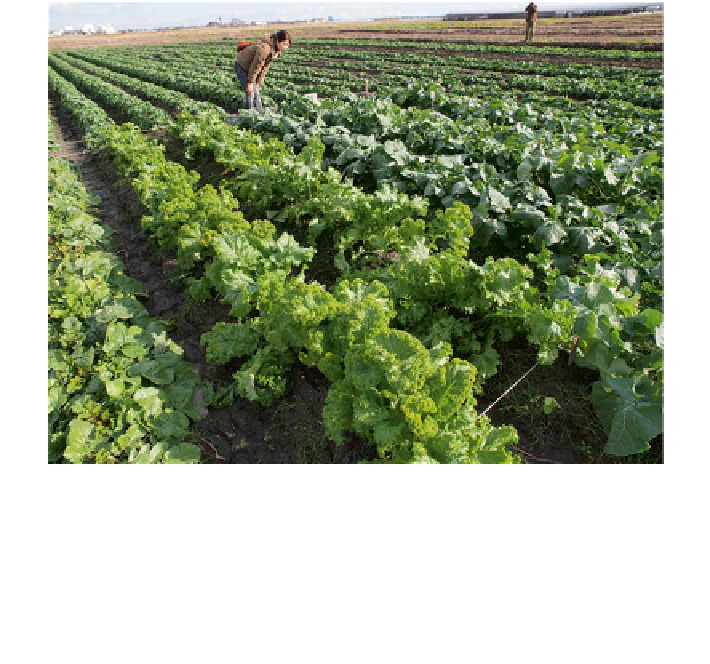Environmental Engineering Reference
In-Depth Information
Fig. 18.4
Mustard and rapeseed showed well growth in the damaged paddy fi eld (10th December
2011; Wakabayashi Ward, Sendai City. Source Photo: Yutaka Nakai)
Table 18.3
Support received from partner organizations cooperating with the rapeseed restoration
project
Partner organization
Type of support
Miyagi Prefecture
Soil surveys
Sendai City
Demonstration trials
Chida Cleaning, Ltd.
Demonstration trials and BDF production
EAC Corporation
Soil surveys and others
Miyaka Co., Ltd.
Demonstration trials, rapeseed vegetable sales
Local farmers
Demonstration trials: Arai, Wakabayashi Ward and Oshiwake,
Iwanuma City
Kinari Inc.
Donations from the sale of eco-bags
Kureha Corporation
Donations from the sales of wrapping fi lms and others
Kirin Co., Ltd.
Donations from beer sale and others
spring, and although the stems were short, the fi eld was fi lled with yellow fl owers.
2
Harvested before full bloom, the
kizakinonatane
sold well as edible vegetable rape-
seed, and a food preparation method was developed for the plant. A technique was
devised for manufacturing preserved fl owers from pre-fl owering Brassicaceae
2
One of the project's major achievements was a comment by a neighboring farmer, who stated,
“Despite the almost total devastation, I was greatly encouraged by the rapeseed fl owers that sprang
up strongly, just as we have done.”

























Search WWH ::

Custom Search